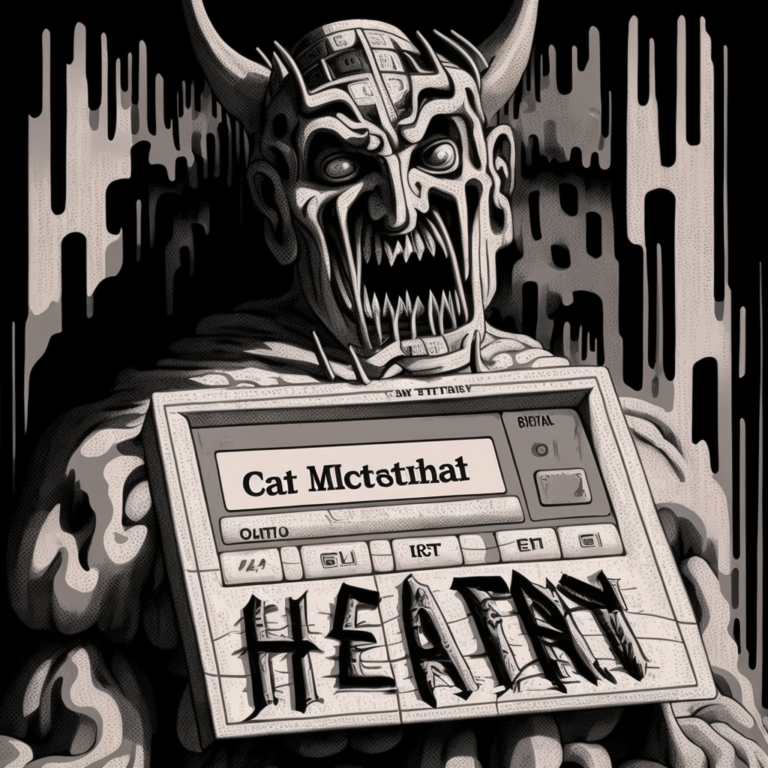The smell of AI
Last Updated on: November 24, 2024
We humans have instincts.
Our learned behaviours become automatic. We identify patterns quickly and easily. Our brains are just wired this way.
Most of our daily decisions, actions, and opinions are because we “just know”, but there is a lot more going on under the surface of our thoughts.
We subconsciously recognise AI
In the beginning, AI content was a novelty. We were impressed by it, amused by it, and sometimes annoyed by it.
We recognised it, talked about it, and thought about it consciously,
Now, it’s fading into the background. We aren’t thinking about it much, but AI content still has a smell. We recognise it on a deeper level, underneath our conscious thoughts.
How we smell AI
Think about what happens when you speak to someone who learned English as a second language.
Even if this person has perfect grammar, a large vocabulary, and twenty years of experience… you can usually tell it is not their native tongue. There are very subtle clues: pronunciations, choices of words, order of words, pauses between words or sentences, etc.
It is the same with AI content. We spot the patterns on a micro and macro scale.

Can you spot the obvious patterns in this post?
There is something “off” about the way it is written. It lacks personality, feels formulaic, and ultimately leaves a bad taste in the mouth of its intended audience.
Nobody wants the wool pulled over their eyes, and trying to do so with AI content will damage your relationships with customers.
The obvious clues include the ending paragraphs of a block of text (i.e. the “In conclusion…” pattern) or the lack of definable fingers on an AI-generated picture of a person.
Yet, there are many more giveaways that our brains work out for us almost instantly.
It feels like we can smell AI from a mile away.
When this is bad
Communication is not just about the words we say; we give out subtle but important signals in between those words.
If you call a friend to console them about the death of their father, they won’t remember what you spoke about. They will remember that you called, that you gave them your time and that you supported them.
If you sent that same friend an AI-generated consolation message on WhatsApp… well, I don’t think I need to tell you what they will now think about you.
“At the end of the day people won’t remember what you said or did, they will remember how you made them feel.”
– Maya Angelou
In business, communicating with your customers is so important. We work hard to impress them with our product, make them feel valued, and support them as best we can.
If there is an issue with your product and you ask ChatGPT to “Write a status update in a positive and upbeat style for recent website downtime issues”, then you are sending many negative signals:
- You are afraid to face issues and are hiding behind AI. It shows a lack of leadership and confidence.
- You don’t really care about the problem.
- You are trying to manipulate your customers into believing the problem is unimportant.
- The team behind the product is hiding and trying to stay anonymous.
- etc.
Doing this will undo any goodwill and good feelings your customers have. It will increase their suspicion of you and create a barrier that will take time to break down.
When this is REALLY bad
In the screenshot above and my examples, there is a conscious recognition of AI.
The friend who received an AI consolation message will stop in their tracks and think, “Did they really just send me this?”. Your customers will challenge you on AI-created announcements and call them out.
There is still a chance to fix these. You can apologise to your customers or friends. You can easily recognise the impact and avoid it in the future.
However, two more situations are potentially worse:
- You double down on AI to make it undetectable.
- You use AI in a subtle way on “unimportant” areas.
Let’s say you are a social media influencer, and you start using AI to write your social media posts. Nobody calls you out on it, and you don’t notice any issues, so you keep going. Over time, your engagement decreases, and people are no longer interested. What happened?
Your followers recognised this on a subconscious level. They didn’t think about AI, but they slowly became disconnected from you because you lost your voice and warmth.

This AI-generated image was made with the prompt “A smelly robot writing on a computer”.
It isn’t good. With some tweaking, it could be a lot better, but those subtle “smells” will still be there.
Notice the strange-shaped window. The smudged logo on the computer. The weird fingers on the robot’s hand.
AI content generation will improve, but these telltale signs will fade until only our subconscious will notice them… and that can be even worse.
It’s not just AI
This is an age-old problem in a new robotic skin. It’s really about the signals we send in our communication, interaction, and content.
Imagine you are researching a new health supplement. You find a website with some good information, but it’s full of ads, and they try hard to get you to buy it from a particular supplier. This signals that the content might not be trustworthy – are they exaggerating the benefits to increase their profit?
Remember – these signals mainly affect us on an automatic, subconscious level.
How do you feel when you contact support and get a stock reply that doesn’t answer your question? What about when you call a company and navigate confusing menus, then stay on hold for 15 minutes?
These are all signals that we are not important and just a source of income to help the bottom line.
How do you feel when you use a smaller company and the CEO sends you a personal message? What about when you open a support ticket with an issue, and they give you a little freebie even when you didn’t ask for it?
These are signals that you are valuable as a customer and that the company cares about your experience with them.
Think carefully about the signals you are giving in all your systems, processes, and interactions.
A special mention to content
Signals apply to content as well as communication.
If you publish a blog and your posts smell of AI, your readers will trust it less. They will, consciously or unconsciously, have doubts that you have researched the topic thoroughly by yourself.
It only takes one post to damage that trust in you.
So… how should you use AI?
My golden rule is to use AI as an assistant OR be transparent.
If you use AI to summarise your notes and create a “New Product Features” social media post, either:
- Tweak it manually and put your unique voice into it
- Put a little disclaimer or comment at the end about AI
If you are being transparent, then own it. Make a joke of it, or give it some personality.
However, in most cases, I would recommend using AI as an assistant. Use it for summarising the key points you want to talk or write about. Always check your AI-created content before publishing.
With any content or communication, ask, “What signals am I giving?”.
* No AI was used, consulted or harmed in the making of this article.
Get notified of new posts:







